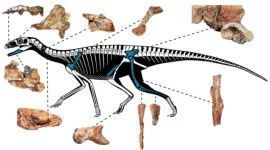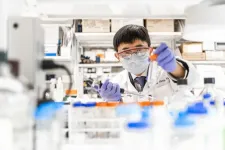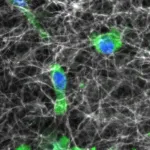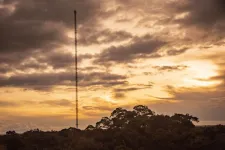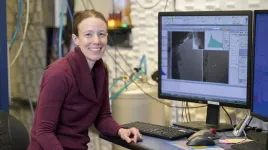(Press-News.org) A set of fossils recovered in Rio Grande do Sul, Brazil’s southernmost state, has brought an extra layer of complexity to the study of the evolutionary history of silesaurids, a family of dinosauriforms (dinosaurs and their close relatives) that lived in the Triassic period between 247 million and 208 million years ago.
In an article published in the Journal of Vertebrate Paleontology, researchers affiliated with institutions in Brazil and the United States show that even with the new fossil assemblage it is difficult to confirm that these animals were part of the evolutionary history of the dinosaurs.
The fossil assemblage was found in 2014 at a site called Waldsanga in the Santa Maria Formation, one of the most fossil-rich rock bodies in Brazil. The bones belonged to more than one individual, and it is impossible to be sure they all belonged to the same species, although the evidence suggests they did. Above all, it is an important record of animals that lived in the area during the Triassic.
The assemblage is the fourth find relating to silesaurids in Brazil and the second from the Carnian age (237-227 mya). It is labeled UFSM 11579 and is deposited at the Stratigraphy and Paleobiology Laboratory of the Federal University of Santa Maria (UFSM).
“When we inserted the assemblage’s characteristics into various phylogenies [evolutionary histories] of the group, we didn’t specify whether the silesaurids were dinosaurs or close relatives of dinosaurs. In any event, the anatomical and phylogenetic evidence validated the find as belonging to the silesaurid lineage, albeit not named as a new species,” said Gabriel Mestriner, first author of the article. The study was part of his PhD research at the University of São Paulo’s Ribeirão Preto School of Philosophy, Sciences and Letters (FFCLRP-USP) with a scholarship from FAPESP.
“Because the bones are disarticulated [separated, not joined up], and considering the uncertainty about the group’s evolution, we concluded that adding another species in this case wouldn’t be a solution but would make the problem worse,” Mestriner said.
The silesaurids were mostly quadrupeds and 1m to 3m in length. They had long hind legs, and their front legs were slender. Remains have been found in present-day South America, North America, Africa and Europe.
The first species, described in 2003, was Silesaurus opolensis. Its remains were found near Opole in Silesia, Poland – hence the name. “It’s the species with the most complete skeleton to date. In addition, the find comprised several hundred well-preserved bones relating to several individuals. About ten more species have been described since then, but their remains were more fragmented,” said Júlio Marsola, second author of the article. Part of his postdoctoral research at FFCLRP-USP was supported by a scholarship from FAPESP. He is currently a professor at the Dois Vizinhos campus of the Federal Technological University of Paraná (UTFPR), also in the South of Brazil.
The study was part of the Thematic Project “Dinosaur diversity and associated faunas in the Cretaceous of South America”, funded by FAPESP and led by Max Langer, a professor at FFCLRP-USP and last author of the article.
“Although many species have been described on the basis of few bones, the main problem with this group isn’t lack of material, but ambiguous anatomy: parts of the skeleton are similar to the dinosaurs, others less so. It’s difficult to resolve their phylogenetic relationships,” Langer said.
Different teeth
In another study, published in 2021, the researchers focused on dental anatomy to look for fresh evidence of the silesaurids’ place in the dinosaur family tree. Their analysis of tooth attachment and implantation in four species, including UFSM 11579, concluded that these species’ teeth were mostly fused to the jawbone, lacking the periodontal ligament (soft connective tissue between teeth and bone) present in dinosaurs and extant crocodiles.
“At the same time, however, some of the teeth we analyzed were anatomically closer to those of dinosaurs and crocodiles, as if the silesaurids were evolving in that direction. If so, they could represent an intermediate stage between the ancestral condition [fused teeth] and the derived condition [teeth anchored to alveolar bone sockets by ligaments],” said Mestriner, who conducted the study as part of his master’s research at FFCLRP-USP, with internships at Virginia Tech in the US and the University of Alberta in Canada.
The new dental configuration, which is also seen in humans and other mammals, is considered an important evolutionary advantage for ancestral non-mammals, since periodontal ligaments act as shock absorbers that help reduce the mechanical impact of biting and chewing.
The findings on dental implantation are not sufficient to differentiate silesaurids from other dinosauriforms, but make it more likely that they are very closely related to dinosaurs. For Langer, who was principal investigator for both studies, understanding the groups’ evolutionary history is more important than continuing to name new species and can be achieved using the existing data, such as fossils deposited in museums.
“We need more detailed phylogenetic studies by researchers who scrutinize collections to analyze all fossils in a group in pursuit of characteristics that point to kinship within the group or with other groups. The databases we have now are the result of this kind of research, of which there hasn’t been enough. It’s hard work, but we won’t move forward without it,” he said.
About São Paulo Research Foundation (FAPESP)
The São Paulo Research Foundation (FAPESP) is a public institution with the mission of supporting scientific research in all fields of knowledge by awarding scholarships, fellowships and grants to investigators linked with higher education and research institutions in the State of São Paulo, Brazil. FAPESP is aware that the very best research can only be done by working with the best researchers internationally. Therefore, it has established partnerships with funding agencies, higher education, private companies, and research organizations in other countries known for the quality of their research and has been encouraging scientists funded by its grants to further develop their international collaboration. You can learn more about FAPESP at www.fapesp.br/en and visit FAPESP news agency at www.agencia.fapesp.br/en to keep updated with the latest scientific breakthroughs FAPESP helps achieve through its many programs, awards and research centers. You may also subscribe to FAPESP news agency at http://agencia.fapesp.br/subscribe.
END
New fossil assemblage highlights complexity of classifying silesaurid phylogeny
2023-11-21
ELSE PRESS RELEASES FROM THIS DATE:
CRF launches Scientific Excellence Top 10 (SET-10)
2023-11-21
NEW YORK – November 20, 2023 – The Cardiovascular Research Foundation (CRF), in conjunction with the Transcatheter Cardiovascular Therapeutics (TCT) 2023 conference, CRF's annual scientific symposium, announced today the launch of the CRF Scientific Excellence Top 10 (SET-10), a new global annual ranking recognizing academic contributions to interventional cardiovascular medicine.
The SET-10 initiative, aligning with CRF's commitment to advancing the field, aims to recognize and celebrate the extraordinary contributions made by medical and academic ...
Cleveland Clinic research finds sex differences in immune response and metabolism drive Alzheimer’s disease
2023-11-21
Tuesday, Nov. 21, 2023, CLEVELAND: Cleveland Clinic researchers analyzed genes and brain tissue of patients with Alzheimer’s and found that differences in brain immunometabolism – the interactions between the immune system and the ways cells create energy – may contribute to women’s increased risk for the disease and its severity.
The findings, published in Alzheimer’s and Dementia, offer important insight into developing sex-specific treatment and prevention options for Alzheimer’s disease, the sixth-leading ...
Hearing loss is associated with subtle changes in the brain
2023-11-21
Hearing loss affects more than 60 percent of adults aged 70 and older in the United States and is known to be related to an increased risk of dementia. The reason for this association is not fully understood.
To better understand the connection, a team of University of California San Diego and Kaiser Permanente Washington Health Research Institute researchers employed hearing tests and magnetic resonance imaging (MRI) to determine whether hearing impairment is associated with differences in specific brain regions.
In the November 21, 2023 issue of the Journal of Alzheimer’s Disease, researchers reported that individuals enrolled in this observational ...
Long in the Bluetooth: Sussex scientists develop a more efficient way to transmit data between our devices
2023-11-21
University of Sussex researchers have developed a more energy-efficient alternative to transmit data that could potentially replace Bluetooth in mobile phones and other tech devices. With more and more of us owning smart phones and wearable tech, researchers at the University of Sussex have found a more efficient way of connecting our devices and improving battery life. Applied to wearable devices, it could even see us unlocking doors by touch or exchanging phone numbers by shaking hands.
Professor Robert Prance and Professor Daniel ...
Discovering communications mechanisms between cells
2023-11-21
Day by day, we communicate with our office colleagues to accomplish tasks that are necessary to function. The more than 200 different types of cells in our bodies do the same thing, but the way they communicate with each other isn't as simple as sending an email.
Researchers like Ioannis Zervantonakis are still trying to understand how these cells actually communicate with each other. The assistant professor of bioengineering at the University of Pittsburgh Swanson School of Engineering recently received a National Institute of General Medical Sciences Maximizing Investigators' Research Award, and his project ...
Digital payment platforms can easily be misused for drug dealing
2023-11-21
Digital payment platforms such as Venmo work great for sharing a dinner bill with friends, buying gifts at a pop-up shop or making payments without cash or credit cards.
But these digital payment platforms have a dark side: They can be misused for drug dealing and other illicit activity, suggest researchers from the University of California, Davis. And social media apps such as TikTok and Instagram can act as marketing tools for digital drug dealing.
“While platforms like Venmo revolutionize financial interactions, they also highlight the need for ongoing vigilance and adaptive regulatory measures,” said Pantelis ...
Deep-sea mining and warming trigger stress in a midwater jellyfish
2023-11-21
The deep sea is home to one of the world's largest communities of animals about which we still know very little. Yet it is already subject to a growing number of human-induced environmental pressures. How do its inhabitants respond to these stressors? A new study led by researchers from the GEOMAR Helmholtz Centre for Ocean Research Kiel, published today in the scientific journal Nature Communications, provides first insights into the stress response of a deep pelagic jellyfish to ocean warming and deep-sea mining induced sediment plumes.
One particular and potentially large environmental stressor for organisms in the deep ocean is the environmental ...
Gender prize gap in science exists as only one in eight female academics win awards named after men
2023-11-21
Female academics are significantly underrepresented in winning academic prizes and having awards named after them, a new study shows.
Analysis of nearly 9,000 awardees and 346 scientific prizes and medals published today (Tuesday 21 November) in Nature Human Behaviour has found that men win eight prizes for every one won by a woman if the award is named after a man. These awards represent almost two thirds of all scientific prizes.
Female academics are however more likely to win awards that have been named after other notable female scientists, with 47% of those awards going to women and 53% to men.
Dr Katja Gehmlich, Associate Professor in the Institute ...
Effect of aerosol particles on clouds and the climate captured better
2023-11-21
Leipzig/Mainz. The extent to which aerosol particles affect the climate depends on how much water the particles can hold in the atmosphere. The capacity to hold water is referred to as hygroscopicity (K) and, in turn, depends on further factors – particularly the size and chemical composition of the particles, which can be extremely variable and complex. Through extensive investigations, an international research team under the leadership of the Max Planck Institute for Chemistry (MPIC) and the Leibniz Institute for Tropospheric Research ...
Hydrogen detected in lunar samples, points to resource availability for space exploration
2023-11-21
WASHINGTON – U.S. Naval Research Laboratory (NRL) researchers have discovered solar-wind hydrogen in lunar samples, which indicates that water on the surface of the Moon may provide a vital resource for future lunar bases and longer-range space exploration. Space-based resource identification is a key factor in planning for civilian- and government-led space exploration.
“Hydrogen has the potential to be a resource that can be used directly on the lunar surface when there are more regular or permanent ...
